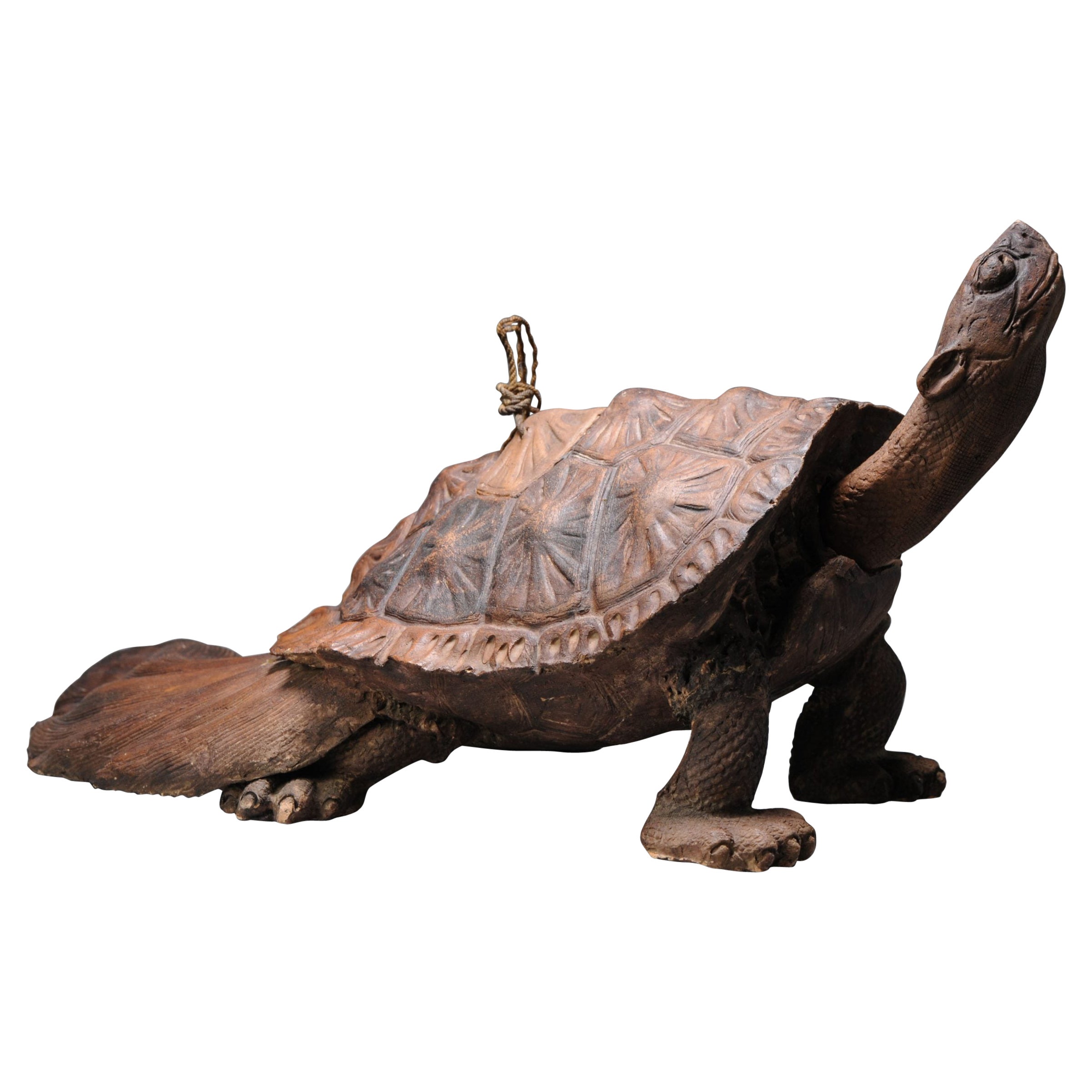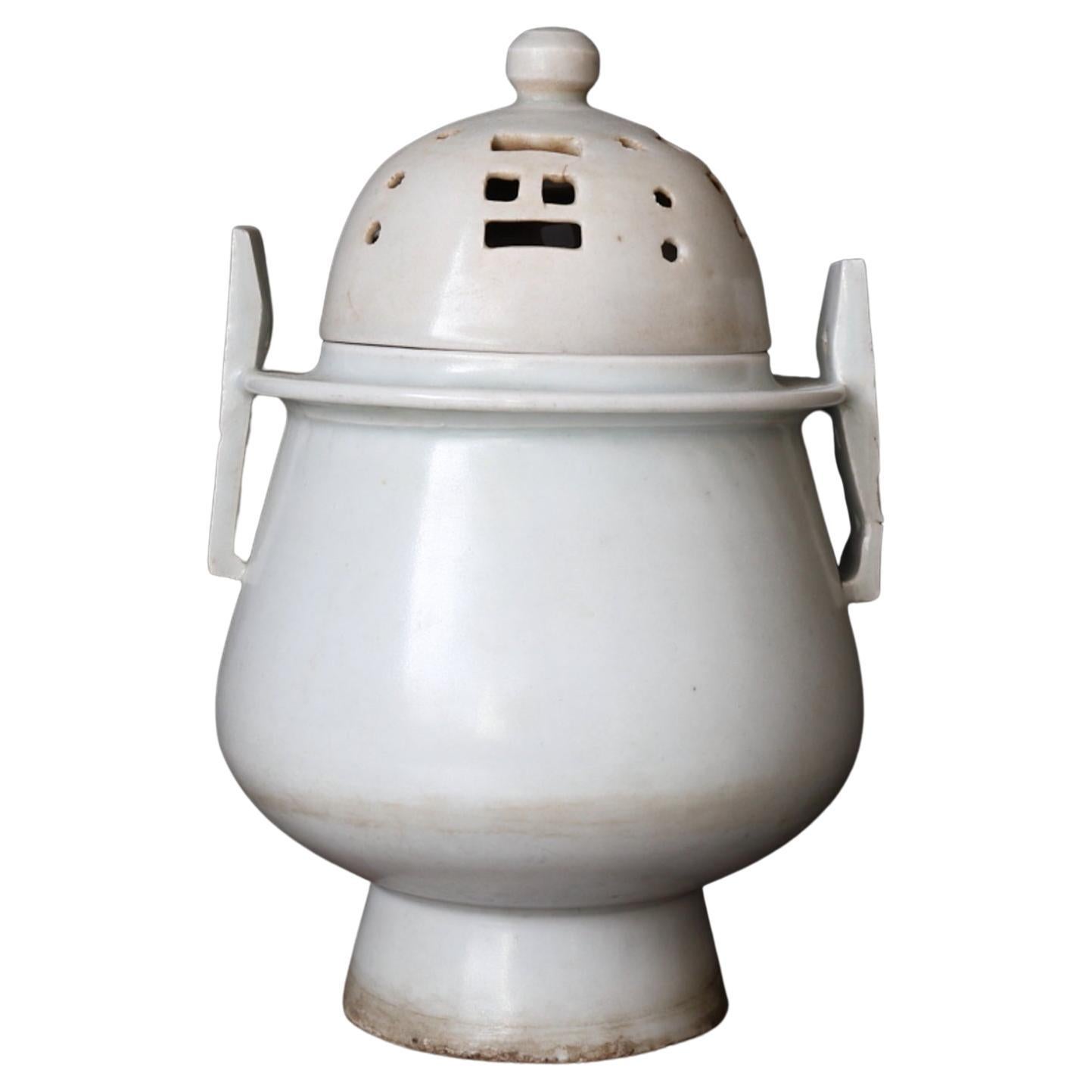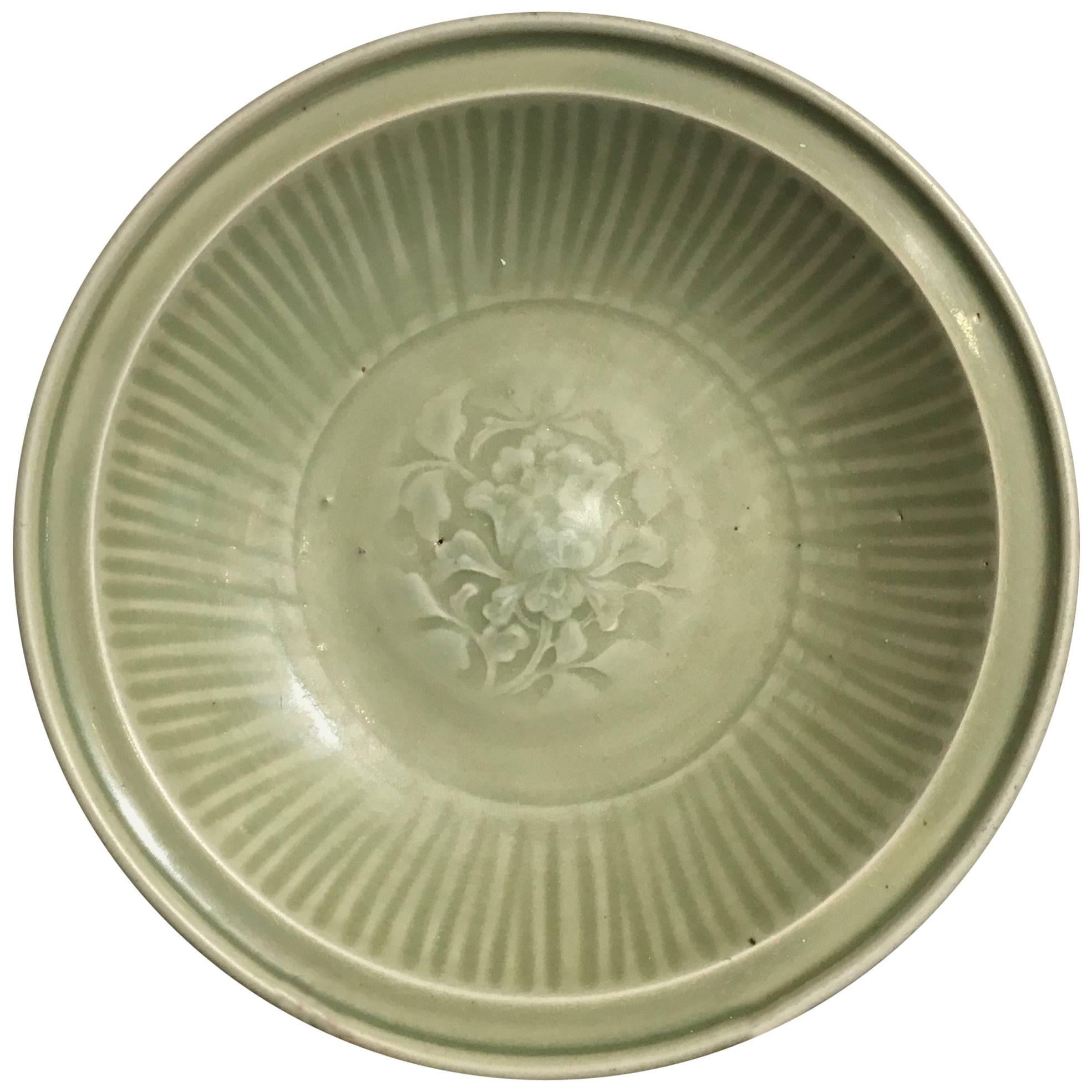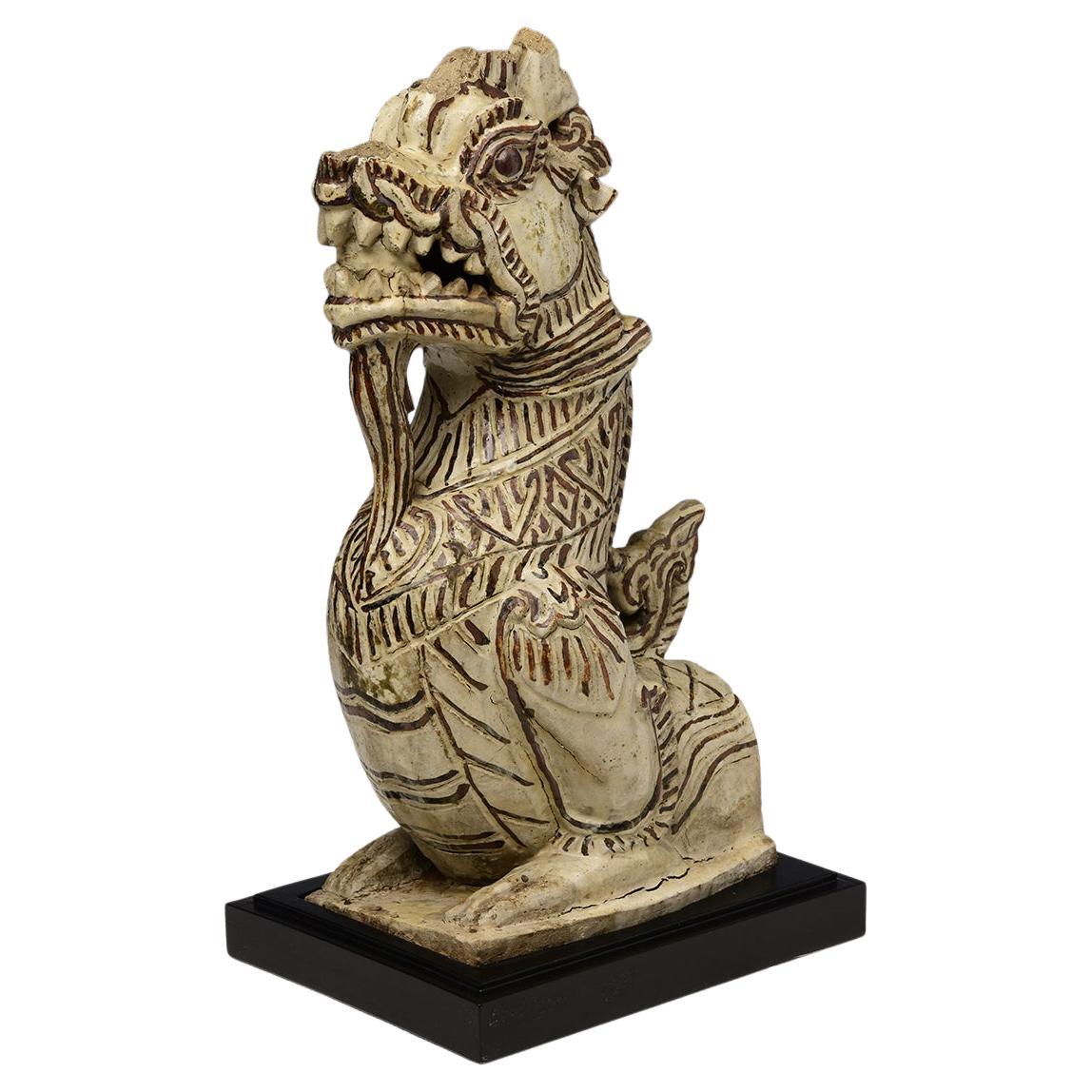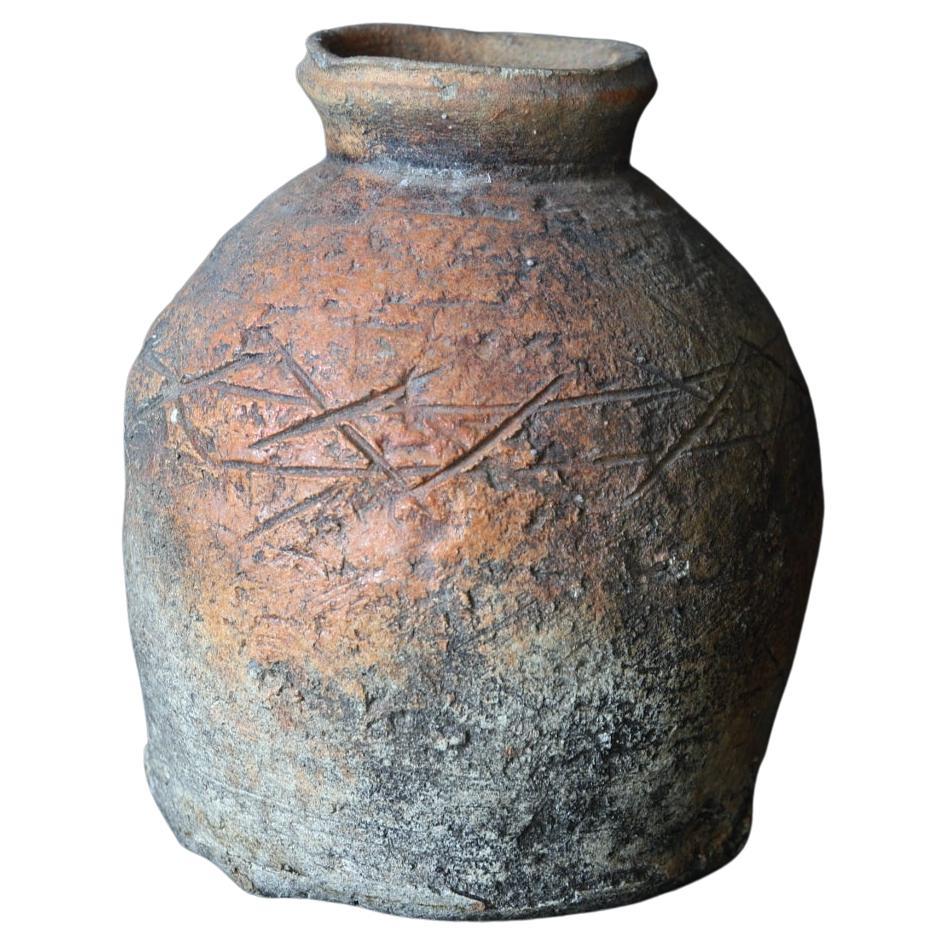Items Similar to Celadon Incense Burner with Peony Arabesque Design/Chinese Antique/14th-17th C
Want more images or videos?
Request additional images or videos from the seller
Celadon Incense Burner with Peony Arabesque Design/Chinese Antique/14th-17th C
About the Item
This is a Celadon three-legged incense burner with peony arabesque design.
Since the 14th century, Dwarf sedge was planted in this pot to decorate the tea room, so in Japan it is also called Sekishobachi "Dwarf sedge pot".
Originally, it was an incense burner, but in the spirit of Japanese tea ceremony "Mitate", people freely created uses for things and enjoyed them with tea.
A peony arabesque pattern is drawn around the three-legged torso.
The pot has a penetration. If it weren't for that, it would have been a museum-grade item. However, it is still a rare and wonderful piece. Comes with a wooden box. The wooden box has damage.
- Dimensions:Height: 4.73 in (12 cm)Width: 12.21 in (31 cm)Depth: 12.6 in (32 cm)
- Materials and Techniques:
- Period:
- Date of Manufacture:1368-1644
- Condition:Penetration at the bottom Three-legged celadon pot with peony arabesque engraving from the Ming dynasty Longquan kiln. An incense burner was converted into a stone bowl. Since the 14th century, Dwarf sedgeof the pot / Damaged on the old wooden box.
- Seller Location:Kyoto-shi, JP
- Reference Number:1stDibs: LU7673232697492
About the Seller
No Reviews Yet
Vetted Seller
These experienced sellers undergo a comprehensive evaluation by our team of in-house experts.
Established in 2012
1stDibs seller since 2022
- ShippingRetrieving quote...Ships From: Kyoto-shi, Japan
- Return PolicyA return for this item may be initiated within 2 days of delivery.
More From This SellerView All
- White Porcelain Incense Burner / Korean Antique / Joseon Dynasty/1392 - 1897 CELocated in Kyoto-shi, KyotoThis incense burner presents the characteristics of a typical Yi Dynasty Joseon Dynasty incense burner with a body that rises smoothly from the base, openworked ears and a semi-circu...Category
Antique 17th Century Korean Antiquities
MaterialsCeramic
- Tokoname Sutra Jar, Heian-Kamakura/Japanese Antique/8th-14th CenturyLocated in Kyoto-shi, KyotoThis is an old Tokoname sutra jar from the Heian to Kamakura periods. It has a shape that traces the lineage of medium-sized Sue ware pots, and is a unique ty...Category
Antique 15th Century and Earlier Antiquities
MaterialsCeramic, Pottery
- Antique Shigaraki Jar "Uzukumaru"/Japanese Vase/14th-16th Century/Wabi-SabiLocated in Kyoto-shi, KyotoDuring the Muromachi Period (1392–1573), the concept of wabi-sabi was formed from the tea ceremony culture. Shigaraki ware was greatly influenced by the aesthetic sense of tea masters in the flow of the times. This product is a small jar called "UZUKUMARU", which was used by farmers as a pot to store seeds. The higaki pattern drawn on the body is unique to Shigaraki. It is said that it is modeled after a shimenawa rope or the bamboo fence...Category
Antique 15th Century and Earlier Japanese Antiquities
MaterialsCeramic
- Vermillion Lacquer Rinka Tray/Chinese Antique/14th-17th century/Tea wareLocated in Kyoto-shi, KyotoThis product is a rare six-sided vermillion lacquer rinka (ring of flowers) tray. It was made in the late Yuan and early Ming dynasties. It has been ca...Category
Antique 15th Century and Earlier Chinese Antiquities
MaterialsWood
- White Porcelain Vase / 17th Century / Korean Antiques / Joseon DynastyLocated in Kyoto-shi, KyotoThis product is a white porcelain bottle from the Joseon Dynasty. People in those days used bottles like this to make soap from waste oil. With use, the porcelain frayed and curle...Category
Antique 17th Century Antiquities
MaterialsCeramic, Porcelain
- Moon Jar 'Dalhanari', Lot3 / 17th Century / Korean Antiques / Joseon DynastyLocated in Kyoto-shi, KyotoThis is a white porcelain jar from the mid-Joseon period, also known as a "Talhunari" or "moon jar". During the Joseon Dynasty, which was strongly influenced by Confucianism, the purity of white porcelain was particularly prized in its artistic expression due to its Confucian sensitivity. The defining characteristic of white porcelain during this period was its pure white color, but there were many subtle variations in the white hues, with some being classified as milky white, snowy white, ashen white, and bluish white. The term "Talhunari" means "moon jar" in Korean, and it refers to the large, round shape of the jar, resembling a full moon. It was named by Kim Whanki, a representative abstract painter of Korea. The soft, curving lines and sturdy body that seems to embrace the full moon give the jar both power and tranquility. This type of jar was produced in large quantities during the 17th century. The white of the moon jar is not the pure white of early Joseon porcelain...Category
Antique 17th Century Korean Ceramics
MaterialsCeramic, Porcelain
You May Also Like
- Antique Iwayaki Earthenware Edo Incense Burner of a Turtle 19th Century Japan, JLocated in Amsterdam, Noord HollandNicely made and large incense burner or Okimono of a turtle. In earthenware with nice patina. Shimane Prefecture Iwayaki (Nagahama Yaki) Turtle figurine. The head and part of the bac...Category
Antique 19th Century Japanese Edo Antiquities
MaterialsEarthenware
- 14th-16th Century, Sukhothai, Antique Thai Sukhothai Stoneware NagaLocated in Sampantawong, THAntique Sukhothai stoneware Naga. Age: Thailand, Sukhothai Period, 14th - 16th Century Size of Naga only: Height 38.5 cm. / width 16.3 cm. / length 19 cm. Size including stand: Heig...Category
Antique 15th Century and Earlier Thai Antiquities
MaterialsPottery
- Chinese Ming Dynasty Longquan Celadon Peony Deep Dish, 14th-15th CenturyLocated in Austin, TXA beautiful Chinese celadon glazed deep dish with an impressed peony design to the center, Ming Dynasty, circa 1400, Longquan kilns, China. The lovey dish covered in an attractive ...Category
Antique 15th Century and Earlier Chinese Ming Ceramics
MaterialsPorcelain
- Chinese Song Period Celadon Glazed BowlLocated in London, GBA Chinese Song period celadon glazed bowl. Really nicely thinly potted example with craquelure due to age. Provenance: From a private London coll...Category
Antique 15th Century and Earlier Chinese Archaistic Antiquities
MaterialsPottery
- 19th Century Antique Chinese Bronze Censer, Incense BurnerLocated in Stamford, CTA bronze censer or also known as a incense burner from the 19th century. This incense burner has great detailing with handles in the shape of bonsai trees. The center section has a e...Category
Antique 19th Century Chinese Antiquities
MaterialsBronze
- Rare Boshan Incense Burner Yue Celadon, Jin dynastyLocated in seoul, KRThe Boshan incense burner is particularly notable among Han dynasty incense burners for its unique shape. Designed to resemble a mountain or even a mythical mountain, it is characterized by its pointed peaks that rise upwards. These peaks often function as vents for the smoke, creating an effect reminiscent of a volcanic eruption. The body of the incense burner is typically round, with multiple small peaks surrounding a central, larger peak. The material used is mainly ceramic, although there are instances where they were made of bronze. It is presumed that this incense burner was used for religious or ceremonial purposes during its time. The colors of these burners are usually in shades of pale green or greyish brown, with the application of glaze to achieve a variety of colors on occasion. Such incense burners are often found in tombs or ritual sites, and their purpose was to burn incense for purification of space or to produce pleasant aromas. The Boshan incense burner also represents a significant cultural heritage, showcasing the craftsmanship and artistic values of the period. Today, it is considered a quintessential example of ancient Chinese art. Period : Han-Jin Dynasty Type : Incense Burner Medium : Yue celadon...Category
Antique 15th Century and Earlier Chinese Han Antiquities
MaterialsStoneware
